Biographies: North Country Honor Flight #48 Veterans – September 2, 2023
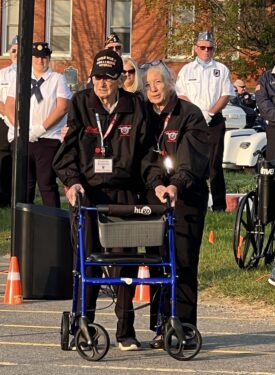 North Country Honor Flight Operations Director Janet Duprey read these biographies at Saturday’s Send-Off Ceremony at the U.S. Oval.
North Country Honor Flight Operations Director Janet Duprey read these biographies at Saturday’s Send-Off Ceremony at the U.S. Oval.
Clayton Beisiegel – U.S. Army Air Corp. 1943-1946 World War II
Clayton, a junior, left Boys Vocational School to help his family. After basic training in Florida, Clayton, a Rifle-Range Instructor, developed training programs in South Carolina. Clayton was in Scotland on D-Day. Ordered to England, Clayt, a supply clerk, performed various duties. Given one break, Clayt joined a convoy to Lowestoft Beach. He said Canadian soldiers looked rough, but the girls looked really good.
In London, Clayt served officers in the mess hall. A great fan, Clayt’s best experience was serving Glen Miller and his Big Band meals. Flying to Germany, Clayton spent twelve months as a mail courier picking up and delivering correspondence between headquarters. Driving a Jeep, Clayt traveled across bombed-out roads, driving around big holes. Germans strung razor wire across roads. If the wire went through the windshield, it would take the driver’s head off. Bumper strips with metal posts kept the wire from going into the windshield. Returning stateside, Clayt spent a week aboard ship, sleeping in hammocks, five deep, one on top of the other. Clayton was given $20.00 to get home. Eyesight issues kept Clayt from combat, saying his experiences didn’t compare to those in combat. Asked about the best part of his service, Clayt said ‘discharge.’
Two weeks shy of their 75th wedding anniversary, Clayton’s wife Lorraine passed. On February 22nd, Clayton celebrated his 100th birthday! Let’s show our deep appreciation for Clayton Beisiegel.
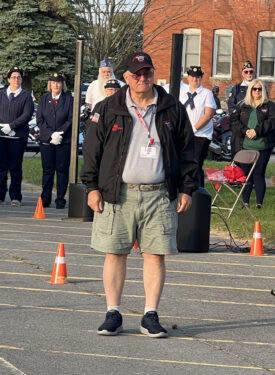 Peter Babbie – U.S. Marine Corp 1971-1976 Vietnam Era
Peter Babbie – U.S. Marine Corp 1971-1976 Vietnam Era
Peter enlisted and trained as a Combat Engineer. Peter was stationed at Paris Island, South Carolina, Camp Lejeune and Camp Geiger, North Carolina. Peter wore many hats, participating in several training sessions and various projects to maintain the installations. Peter’s skills included building Quonset Huts and floating bridges. After a 3-day pass, Peter returned to base to learn he was a day late. The Military Police put him in handcuffs and sentenced him to months of “KP” duty as he made desserts for officers instead of his real duties. Let’s be clear: Peter received an honorable discharge!
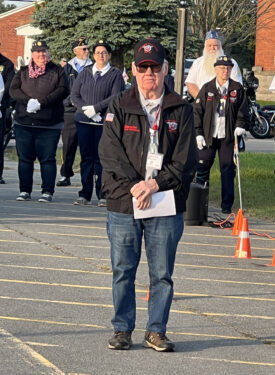 Maurice Brown – U.S. Army 1966-1992 Vietnam
Maurice Brown – U.S. Army 1966-1992 Vietnam
Maurice enlisted at age 17 and served for 26 years. Trained in Heavy Equipment Operations and Jungle Warfare, Maurice went to Germany.He was ordered to Hai Van Pass, Vietnam, along Route 1. Maurice had many tours in Vietnam, enjoying being at the controls of a bulldozer or Uke. Maurice extracted gravel and stone from quarries to make cement and roads, working with the First Cavalry and building combat landing zones.
Maurice spent three years in Korea with the Ordinance Company. Ordered by the Defense Nuclear Agency, Maurice went to 1940 nuclear test sites, the Marshall Islands, to cap leftover radiation with concrete.
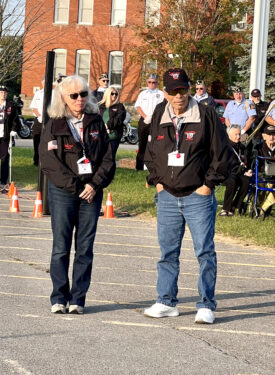 Mark Davey – U. S. Army 1972-1973 Vietnam
Mark Davey – U. S. Army 1972-1973 Vietnam
With his father’s consent, Mark enlisted at 17. He received basic training at Fort Gorden, Georgia. Mark was assigned as a Radio Relay Carrier Attendant, a position he never served in. Ordered to South Korea, Mark was assigned to duty as the driver for the Commander. Mark said his 13 months in South Korea were relatively uneventful. As a curious teenager, Mark traveled to the Demilitarized Zone (DMZ) and the historic site of the Korean Armistice Agreement separating South and North Korea. Mark continues to keep up with his Army comrades.
Deborah Dowd – Veteran Guardian for brother Mark Davey – U.S. Air Force. 1974-1980 Vietnam
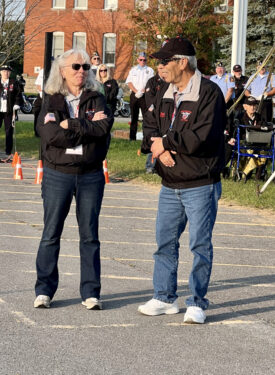 We believe Mark and Deborah are the first twins to go on Honor Flight together. Deborah trained at Keeseler Air Force Base, Mississippi. Sent to England, Deborah served in Air Control Radar Maintenance and is the first female Radar Technician to serve in the European Theatre. At Eglin Air Force Base, Florida, Deborah moved to Accounting and Finance, allowing her to take advantage of the GI Bill.
We believe Mark and Deborah are the first twins to go on Honor Flight together. Deborah trained at Keeseler Air Force Base, Mississippi. Sent to England, Deborah served in Air Control Radar Maintenance and is the first female Radar Technician to serve in the European Theatre. At Eglin Air Force Base, Florida, Deborah moved to Accounting and Finance, allowing her to take advantage of the GI Bill.
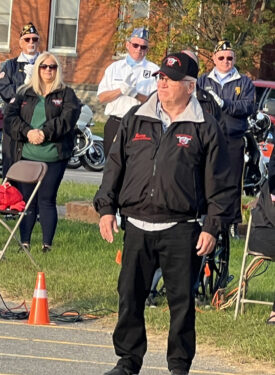 Barry Fernald – U.S. Army 1969-1971 Vietnam
Barry Fernald – U.S. Army 1969-1971 Vietnam
Receiving a draft notice, Barry trained at Fort Dix, Fort Benning, and Fort McClellan. Barry was sent to Phu-bai, Vietnam. As an Unattended Ground Sensor Operator, Barry manned directional sensors to monitor hostile forces’ movement, also protecting U.S. military installations and personnel. On hot nights in Vietnam, arriving soldiers slept ‘buck naked’ until gunfire at night and changed into fully dressed with boots on. Barry felt something running up and down his leg one night, but he didn’t want to know what it was.
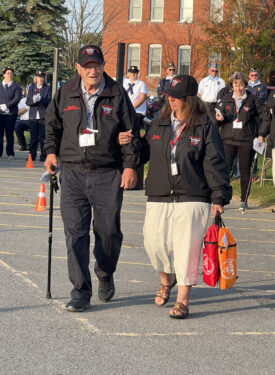 Walter Maddox – U.S. Army 1945-1952 Korean
Walter Maddox – U.S. Army 1945-1952 Korean
After basic and specialized training, Walter joined the 71st Battalion. On a ship for five days en route to Korea, the sailors were woken up at 4 a.m.. They stayed on the boat until 9:30 p.m. Walter maintained generators for specialized teletype trucks, compounded lighting, and electronic fences, working shifts to keep them running 24/7. A Korean house boy accidentally set off a grenade; soldiers panicked, thinking it was an enemy attack. Two planes came in for emergency landings; one crashed and the other parachuted out. Walter lived in a one-man tent, slept in trucks side by side, and spent one night in a graveyard. Sent to Guam by mistake, Walter enjoyed three weeks of R & R. Flown to Tokyo; Walter stayed in the same hotel as General McArthur.
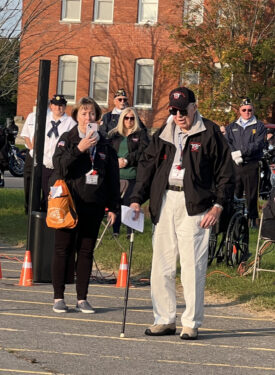 Charles Newsham – U.S. Navy 1948-1953 Korean
Charles Newsham – U.S. Navy 1948-1953 Korean
Bad eyesight kept Chuck from Flight School. Assigned as a Fire Control Technician, Chuck boarded the USS Rochester, 7th Fleet. President Truman ordered the 7th Fleet into action as the Korean War started. Their first mission was to evacuate U.S. citizens.
Chuck was at the Battle of Chosin Reservoir as 130,000 Chinese enemy forces attacked the 1st Marine Division and UN Forces. Chuck’s ship assisted the soldiers who marched over 70 miles to escape the Reservoir. The shelling lasted 2.5 years. Chuck was responsible for the precision of large guns, allowing troops to target trains, roads, supply lines and enemy movements. Given two days for R & R, Korean bomber aircraft dropped four bombs. Three hit the ship and bounced off without exploding. Ending his tour, Chuck left his seabag on his bunk, walked out and didn’t turn back.
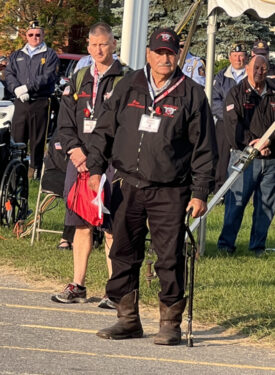 James Pudlo – U.S. Army 1966-1969 Vietnam
James Pudlo – U.S. Army 1966-1969 Vietnam
Jim was drafted and sent for training at Fort Jackson and Fort Monmouth. Assigned as a Fixed Plant Carrier Repairman, Jim worked on Communications and Microwave equipment. Jim spent fourteen months at Fort Shafer, Hawaii, the headquarters for the Asia-Pacific region. He was transferred to Vietnam and served with the 23,000-soldier Army Signal Corp. near Saigon and Da Nang. The mission was to originate, install, operate, and maintain a complex communication system across Southeast Asia under a single, unified command. After the Tet Offensive, Jim was able to slow down.
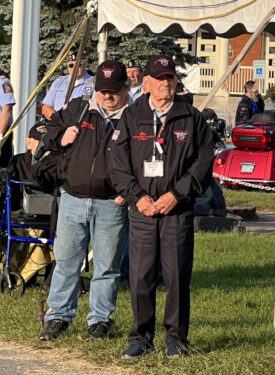 Leonard Reyore – U.S. Navy 1955-1958 Cold War
Leonard Reyore – U.S. Navy 1955-1958 Cold War
Leonard was assigned to the destroyer USS Hyman-DD732. As a Fire Control Technician, Leonard directed the weapons systems, assuring weapons, including guns, torpedoes and hedgehogs, accurately struck their enemy targets. Leonard saw the world at seaports in Cuba, Chili, Artic Circle, France, Greece, Italy, Turkey, Germany, England and Scotland. Crossing the Equator, sailors faced the humiliating shenanigans of initiation. Leonard disliked standing watch from Midnight to 4:00 a.m., especially when workdays started at 5:00 a.m. Leonard did like the opportunity to taste many varieties of beer.
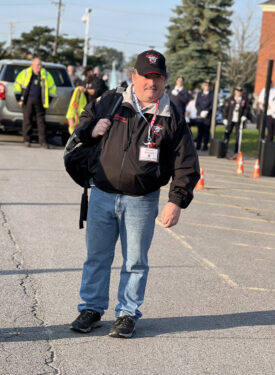 Randy Reyore, Veteran Guardian for his dad – U.S. Army Reserves 1985-1997 Desert Storm
Randy Reyore, Veteran Guardian for his dad – U.S. Army Reserves 1985-1997 Desert Storm
Randy enlisted with the 962nd Ordinance Company, 4th Platoon, Plattsburgh. Randy trained in Munitions Handling and Storage. Randy deployed to Germany, preparing munitions for transport to the War in Iraq. Participating with the Canadian Royal Mounted Police, Randy and other soldiers foiled a group of Canadians attempting to steal rockets, missiles, and flares from a depot.
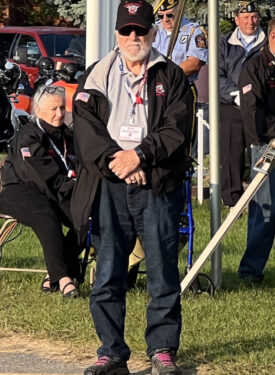 Kenneth Robillard = U.S. Navy 1967-1968 Vietnam
Kenneth Robillard = U.S. Navy 1967-1968 Vietnam
Ken enlisted at 17, completing basic training at Great Lakes, Illinois. Trained as a Court Reporter, Ken transcribed legal procedures, including trials, depositions, and administrative hearings. Ken‘s duties were in direct support of the Navy JAG, the legal arm of the Navy.
Ken was assigned to a Combat Helicopter Unit. He recalls a court day sitting with 16 sailors in a non-judicial punishment without a court-martial under the Military Code of Military Justice. He participated in four cruises on the Atlantic, including the Aircraft Carrier USS Lake Champlain.
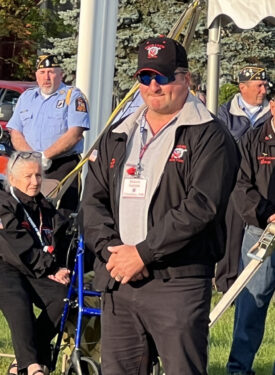 Shawn LaPier, Veteran Guardian for Father-in-law Kenneth Robillard – U.S. Army 1991-1996 Gulf War
Shawn LaPier, Veteran Guardian for Father-in-law Kenneth Robillard – U.S. Army 1991-1996 Gulf War
After basic training, Shawn attended specialized training as a Quarries Specialist. In this position, Shawn constructed airfields, roads, dams and buildings by moving tons of materials used to clean, crush, drill, grade, and detonate rock at construction sites. Shawn assisted the California Environmental Protection Agency with the cleanup of oil spills at military sites.
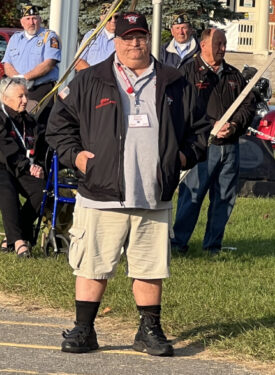 Glen Shick – U.S. Air Force 1977-1985 Cold War
Glen Shick – U.S. Air Force 1977-1985 Cold War
Glen enlisted and was assigned to transportation units, including Plattsburgh Air Force Base. After specialized training, Glen was assigned to a covert location in Iran designated “Desert 1”. The team was sent to rescue the 52 Embassy hostages kept captive for 444 days. Unfortunately, the rescue aircraft collided at a refueling point, ending the mission unsuccessfully. Glen received the National Defense Service Medal and Naval Reserve Meritorious Service Medal recognized by the combat operations Joint Task Force in support of Delta Force Operation Eagle Claw.
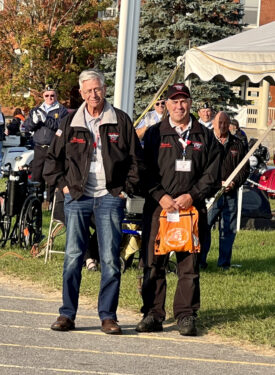 Francis Stunzi – U.S. Navy 1956-1959 Cold War
Francis Stunzi – U.S. Navy 1956-1959 Cold War
Frank enlisted at age 17. After training, Frank was assigned to the USS Neosho-AO-143, a fuel and cargo replenishment ship. A Culinary Specialist, Frank fed 350 men three meals a day as the ship went from Norfolk up and down the Atlantic coast and across the Atlantic to support the Suez Canal crisis and a special task force conducting three nuclear weapons tests in the South Atlantic. Crossing the Equator, young seamen called Poly-Wogs had their heads shaved, were submersed in fuel oil, and crawled through weeks of old garbage to achieve the “Shell Back” title. Frank has the photos to prove it.
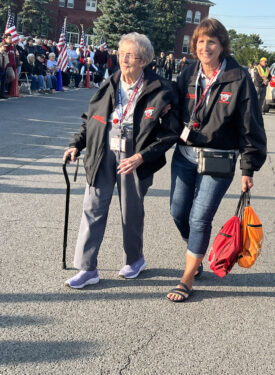 Lucille Trahan – U.S. Air Force 1954-1956 Cold War
Lucille Trahan – U.S. Air Force 1954-1956 Cold War
Lucille enlisted shortly after the end of the Korean War. Trained as an Administration Specialist, Lucile went to Texas and then to F.E. Warren Air Force Base, Wyoming. In Wyoming, Lucille marched in a local parade with a famous movie star; she won’t tell who. She recalls the women looked better marching than the men did. Enjoying the Wyoming countryside, Lucille truly liked her work and she fell in love with horseback riding. Lucille revealed to the Flight Leaders she loved going out with the cooks. She enjoyed meeting people and traveling to various places.
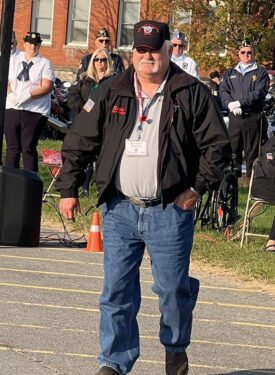 Howard Turner – U.S. Army 1967-1970 Vietnam, Army Reserves 1991
Howard Turner – U.S. Army 1967-1970 Vietnam, Army Reserves 1991
After basic training at Fort Knox, Howard went to Fort Leonard Wood to become a Heavy Equipment Operator. Howard was with a construction team that built an 840-foot bridge across a Missouri river. Shipped to Tuy-Hoa, Vietnam, Howard worked along the Vietnam National Route 1, Highway 1, the main road to move U.S. forces safely. Leaving the Army, Howard joined the 962nd Ordinance Company, Plattsburgh. Activated in support of Desert Storm, Howard went to Germany, serving as an ammunition inspector for all ordinances being shipped.
Posted: September 4th, 2023 under General News.
